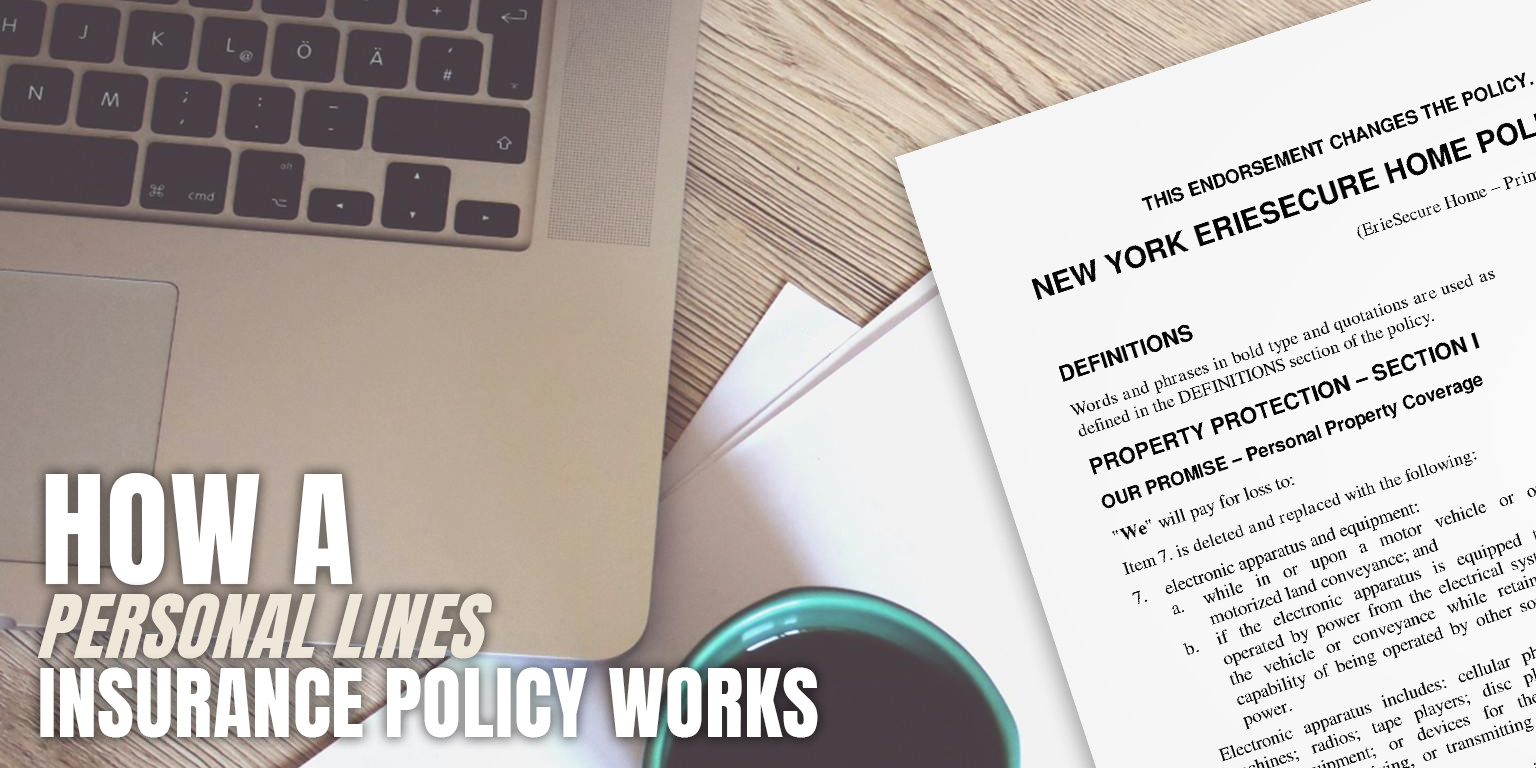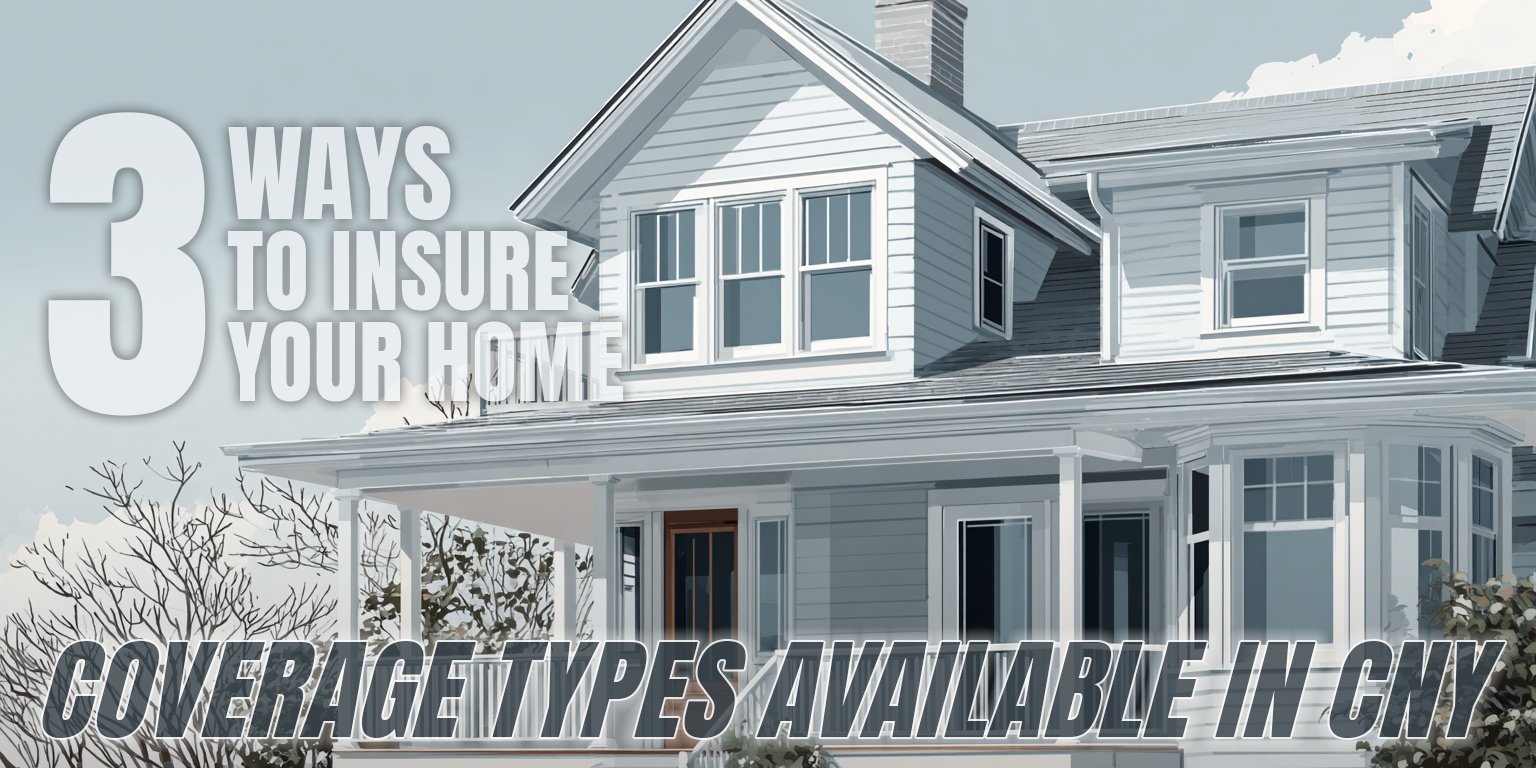How a Personal Lines Insurance Policy Works
August 2nd, 2024
5 min read

Understanding your insurance policy can feel like trying to decipher a foreign language. You're not alone if you've ever felt overwhelmed by the jargon and complexity of your coverage. Many people worry they've bought a policy that doesn't fit their needs, leaving them vulnerable when they need protection most.
At the Horan insurance agency in Central New York, we've seen firsthand how confusing insurance can be. As an independent agency working with multiple carriers, we have a unique perspective on personal lines insurance policies. We're here to help you make sense of it all.
This article will break down the key components of a personal lines insurance policy. We'll explain what each part means and why it matters to you.
By reading to the end, you'll have a clearer picture of your coverage and feel more confident in your insurance decisions.
Let's demystify your policy together, starting with the basics and moving through each crucial element. Whether you're reviewing an existing policy or shopping for new coverage, this article will equip you with the knowledge to make informed choices about your insurance.
Understanding Your Personal Lines Insurance Policy
Reading your insurance policy isn't as straightforward as you might think. You can't just glance at the declarations page and assume you're covered. It's more complex than that. Let's explore why this is the case and how you can become better informed about your coverage.
The Complexity of Insurance Policies
Insurance policies aren't designed for easy reading. They're filled with legal jargon and specific terms that can be confusing for the average policyholder. This complexity serves a purpose—it ensures the policy covers a wide range of scenarios while also protecting the insurance company from unnecessary payouts.
We've created this guide to help you navigate the complexities of personal lines insurance policies. Our goal is to empower you with the knowledge to understand your coverage better.
By breaking down these components and explaining their significance, we aim to remove the mystery surrounding insurance policies. This understanding will help you make informed decisions about your coverage and ensure you're adequately protected.
 The Seven Components of Your Insurance Policy
The Seven Components of Your Insurance Policy
Every personal lines insurance policy follows a specific structure. Understanding these seven key components will help you determine if you're covered, how much coverage you have, and what exceptions might apply. Let's break them down:
- Declarations: This section provides an overview of your policy, including your personal information and basic coverage details.
- Definitions: Here you'll find explanations of key terms used throughout the policy. These definitions can greatly impact how your coverage is interpreted.
- Insuring Agreement: This part outlines what the insurance company agrees to cover in exchange for your premium payments.
- Additional Coverage: Some policies offer extra protection beyond the basic insuring agreement. This section details those additional benefits.
- Conditions: These are the rules and requirements you must follow to maintain your coverage.
- Exclusions: This crucial component lists specific situations or types of damage that aren't covered by your policy.
- Endorsements: These are modifications or additions to your policy that can either expand or limit your coverage.
By carefully reviewing these seven components, you'll gain a comprehensive understanding of your policy. You'll be able to determine what's covered, the extent of your coverage, and any exceptions that might apply if you need to file a claim.
The Importance of Definitions in Your Insurance Policy
Building on our previous discussion, let's dive deeper into why understanding definitions is crucial when interpreting your insurance policy.
The Foundation of Policy Interpretation
Definitions in your insurance policy aren't your typical dictionary entries. They're specific terms that carry significant weight in determining your coverage. For instance, when your policy mentions “residence premises” or “insured,” these terms have precise meanings that may differ from your everyday understanding.
Key Terms to Watch For in Your Policy
Some essential terms you'll encounter include:
- Residence premises
- Insured
- Temporary premises
- You/Your
These phrases will appear throughout your policy, and their specific definitions can significantly impact your coverage. For example, “insured” might extend beyond just you to include family members or even guests in certain situations.
Why Insurance Policy Definitions Matter
By familiarizing yourself with these definitions, you're laying the groundwork for comprehending the rest of your policy. They provide context for interpreting coverage details, conditions, and exclusions. Without this understanding, you might misinterpret crucial aspects of your policy.
However, it's important to note that understanding definitions is just the first step. While it provides a solid foundation, there's more to grasp to fully comprehend your coverage. Let's explore the next crucial elements that build upon this foundation.
From Definitions to Coverage: Piecing Together Your Policy
Now that you've familiarized yourself with the definitions, it's time to understand how these components work together. Think of it like having all the ingredients for a recipe—you know what each item is, but you still need to know how they combine to create the final dish.
The Insuring Agreement and Additional Coverage
The insuring agreement is where you'll find the core of what your policy covers. It outlines who's protected and what risks are included. For instance:
- In a home policy, it might detail coverage for your dwelling.
- An auto policy will explain your liability protection.
- For a landlord policy, it could specify coverage for loss of rental income.
Additional coverage sections expand on this, often providing extra protections beyond the basic agreement.
Understanding Conditions
Conditions are the rules you must follow to maintain your coverage. They might include requirements for reporting claims, cooperating during investigations, or maintaining your property.
Navigating Exclusions
Exclusions are a critical part of your policy that outline what isn't covered. These are specific situations or types of damage that your insurance company won't pay for.
For example, a homeowners policy might exclude damage from floods or earthquakes. It's crucial to understand these exclusions so you're not caught off guard when filing a claim.
Review this section carefully to identify any gaps in your coverage that you might need to address with additional policies or endorsements.
Understanding Endorsements
Endorsements are modifications to your standard policy. They can either add or remove coverage, essentially customizing your policy to fit your specific needs.
For instance, you might add an endorsement to cover high-value jewelry or to increase your liability limits. These are typically listed separately from your main policy document. Pay close attention to any endorsements, as they can significantly alter your coverage.
They're a powerful tool for tailoring your insurance to your unique situation, but it's important to understand exactly what changes they're making to your policy.
Learn more about policy endorsements, also called “riders.”
Putting It All Together
As you read through these sections, you'll see how the definitions you've learned come into play. The policy will use these specific terms to explain who's covered (the "insured"), what's protected (like "residence premises"), and under what circumstances.
This process repeats for each section of your policy, whether it's
- property damage,
- liability, or
- specialized coverage.
To continue your journey, explore our guides on reading and understanding home and auto policies:
- How to Read and Understand Your Homeowners Insurance Policy.
- How to Read and Understand Your Auto Insurance Policy.
These resources offer targeted insights into the specific components of each policy type, helping you decipher the unique aspects of your coverage. As you delve deeper into these specialized areas, you'll develop a more nuanced understanding of your protection, equipping you to make well-informed decisions about your insurance.
Empowering You to Take Control of Your Insurance
Understanding your personal lines insurance policy puts you in the driver's seat. With this knowledge, you can make informed decisions about your coverage, avoiding potential gaps that could leave you exposed.
By taking the time to review each component of your policy, you'll gain confidence in your insurance choices and feel more secure in your protection.
At Horan, we aim to be your advocate in the complex world of insurance. Our experience working with multiple carriers gives us unique insights that we're eager to share. We can help you interpret your policy, identify any weaknesses, and suggest improvements tailored to your situation.
Don't let confusion about your policy leave you vulnerable. Take the first step toward insurance clarity today.
Click the Get a Quote button below to connect with our team. We'll work to become your trusted resource, guiding you through your policy details and ensuring you have the coverage that gives you composure and security.
Daniel is an accomplished content creator. He has been working in publishing for almost two decades. Horan Companies hired Daniel as its content manager in November 2022. The agency entrusted its messaging to him. Since then, Daniel has written insurance articles, service pages, PDF guides, and more. All in an effort to educate CNY readers. He's helping them understand the world of insurance so they can make informed decisions.
Topics:



























